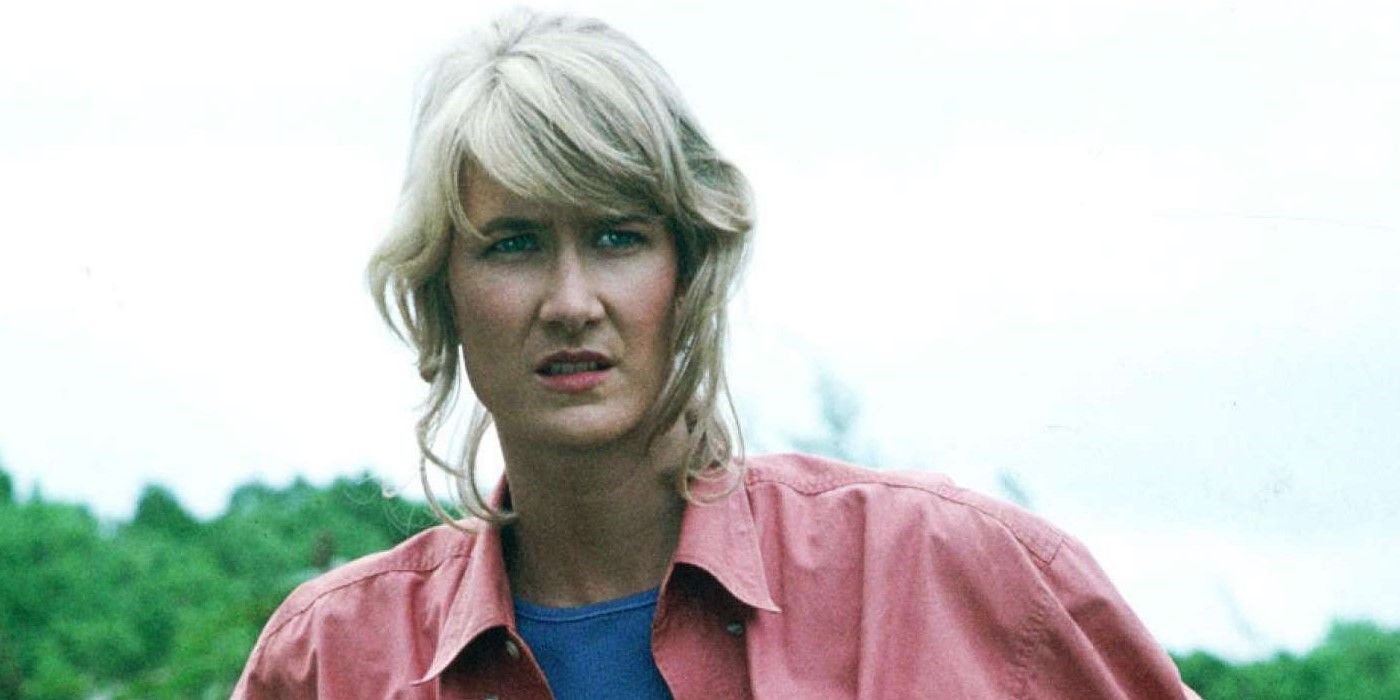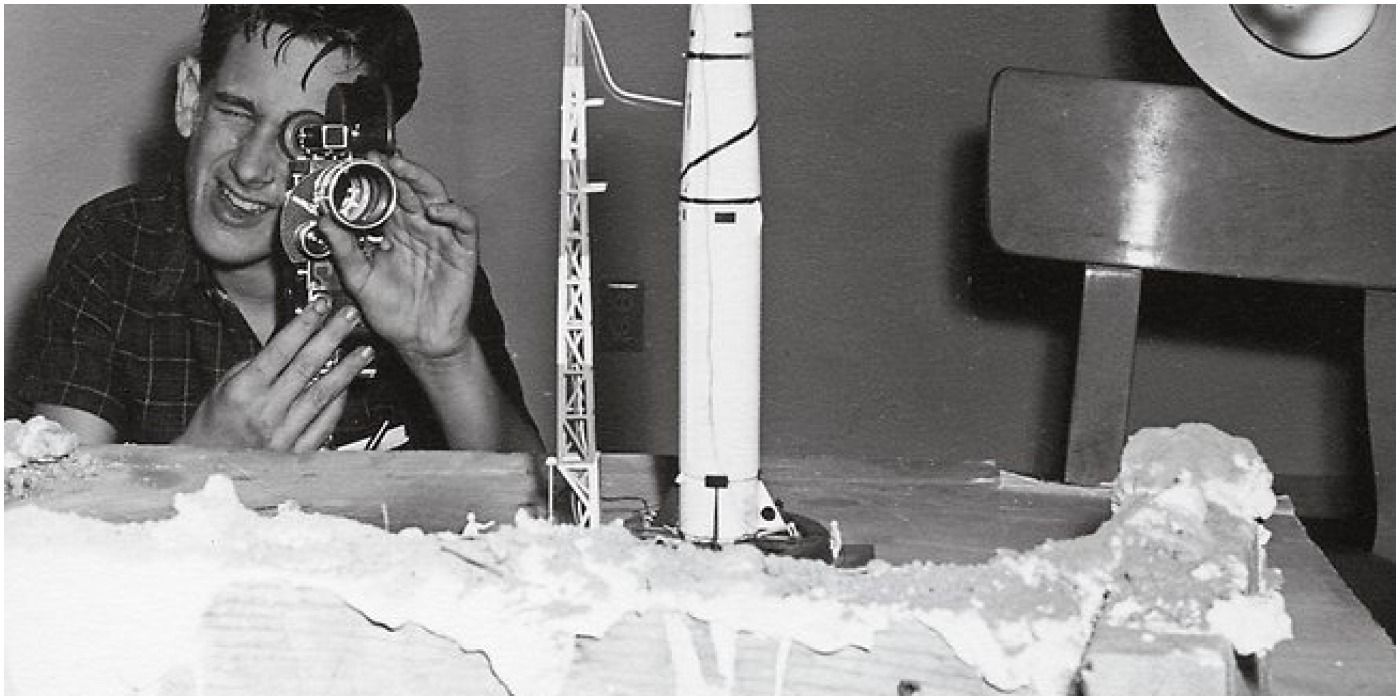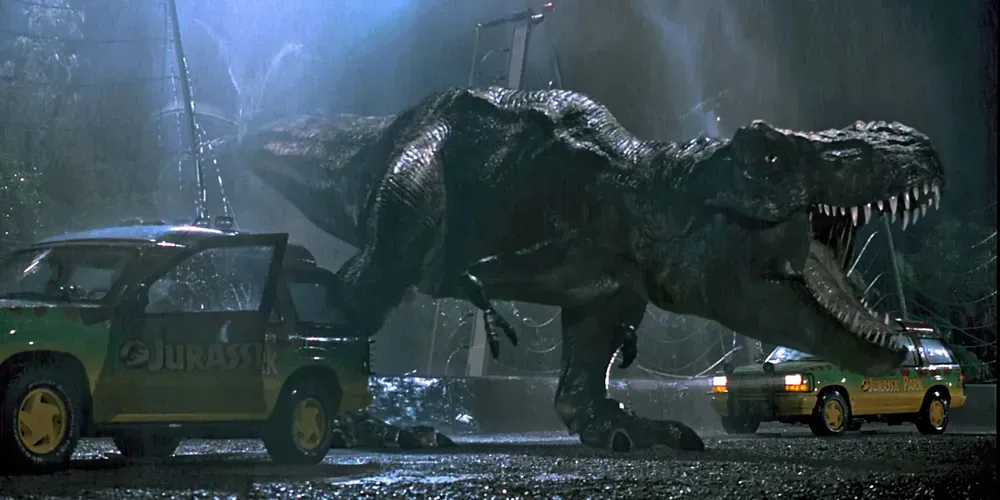Originally released in 1993 and spawning an overabundance of sequels, spin-off animated shows, ripoffs and merchandising ventures of every variety, Jurassic Park has been ingrained into the pop-cultural consciousness of audiences for decades now. It's become such a staple of film history, entrapped like a mosquito in the amber of its own overexposure, that it's easy to forget; Steven Spielberg's original Jurassic Park film is a tremendous piece of work. Embracing so many of the genre elements that have defined some of Spielberg's most iconic films, Jurassic Park is an expertly crafted thrill ride of science-fiction, horror and suspense. And while the Jurassic Park title is obviously synonymous with the awe-inducing dinosaurs it brought to the screen, the most suspenseful sequence in Jurassic Park doesn't actually have any dinosaurs in it.
Steven Spielberg and Jurassic Park Were a Perfect Match
There's a reason even the most general of audiences knew the name Steven Spielberg in 1993. With an output through the '70s and '80s filled with decade-defining classics, with everything from Jaws to Close Encounters of the Third Kind to Raiders of the Lost Ark to E.T., Spielberg spent these decades cultivating a visual language all his own that relied heavily upon the classical suspense techniques of one of his idols, Alfred Hitchcock. Hitchcock spent his career cinematically exploring the divide between surprise and suspense. As Hitchcock eloquently put it, "The big difference between suspense and shock or surprise is that in order to get suspense, you provide the audience with a certain amount of information."
Hitchcock's go-to demonstration for this was the "bomb under the table". In his words, if two characters are sitting at a table with a bomb unknowingly underneath it and the filmmaker doesn't tell the audience, they get ten seconds of surprise when the bomb goes off. But if one were to take the exact same scene and tell the audience beforehand that there is a bomb under the table, a filmmaker can now get ten full minutes of agonizing suspense as viewers dread the impending event and desperately hope the characters will learn the information the audience is already privy to.
Nowhere is Spielberg's use of these techniques more apparent than in Jurassic Park. Something of a multi-million-dollar culmination of Spielberg's career up to that point, the film is full of gargantuan-sized exhilarating set pieces, all driven by suspense. From the initial T-rex encounter to the kitchen-set Velociraptor chase, the film's most unforgettable moments see Spielberg playing the audience like a fiddle through his masterful utilization of suspense. But the film's purest distillation of suspense is actually in a sequence that features no dinosaurs.
The Most Suspenseful Sequence Doesn’t Include Jurassic Park’s Biggest Stars
Late in the second act of Jurassic Park, the characters have been divided in half. Alan Grant and the kids (Lex and Tim) are trekking their way through the park, while Ellie Sattler and co. are back at the park's headquarters. Each team is given a distinct motivation. For Grant, it is to make it back to headquarters alive. For Sattler, it is to get the power back on. While Spielberg ensures the audience is acutely aware of these goals, neither team of characters is aware of the other's actions.
The sequence begins steadily with the camera craning over an electric fence as Grant and the kids arrive at it, deliberately foregrounding the "Danger: 10,000 Volts" sign. Grant tests the fence and even pretends to get electrocuted before assuring the kids that it's safe. The seed is planted: the fence is only safe because the power is off. Just as Grant begins to mull over their options, a dinosaur roars nearby, lending their situation urgency. They all quickly begin to climb the fence. Spielberg and his wonderful editor Michael Kahn (who has been with him since Close Encounters of the Third Kind and is thus overtly familiar with fine-tuning Spielberg's suspense-driven sequences) cut directly from this to Sattler, searching the building for the power breakers. Here, each side's goal is refined: Grant and the kids need to climb the fence to survive, and Sattler needs to find the power breakers to turn them on.
The genius here is that the audience is rooting for each team to succeed. Viewers are invested in Grant and the kids' survival and are invested in Sattler turning the power back on. Spielberg and Kahn gradually pull the rug out from under the audience with this mounting intercutting, revealing the full extent of the correlation between these two struggles. As Sattler finds the breakers, they cut back to Grant reassuring the kids that "it's not a race" and to "take your time" as they climb, even as the audience knows that's the last thing they should be doing. Spielberg and masterful cinematographer Dean Cundey (who shot similarly suspense-exploiting sequences for John Carpenter on Halloween and The Thing) make sure to foreground the giant "Danger: High Voltage" signs on the power breakers, visually reinforcing the connection between these two seemingly disparate events just as Grant and the kids reach the halfway point and climb over the top of the fence.
Sattler follows Dr. Hammond's instructions, pumping the primer handle three times to prepare the breakers. Every individual pump of the primer handle is excruciating, edit staying solely with Sattler as she grows closer by the second to electrifying the fence. She hits the main switch, leading to her having to then individually activate each system from the stack of buttons. As this happens, they cut back to Grant and Lex reaching the bottom of the fence, with Tim still mid-descent as an alarm begins to sound. The alarm startles Tim and makes him nearly fall, drawing out the suspense even more. Cut back to Sattler, now activating each individual system's button. Brilliantly, the camera descends the list of buttons, lingering on the crucial "Perimeter Fences" button at the very bottom as Sattler grows nearer and nearer.
Grant and Lex plead for Tim to jump down as the edit cuts back to Sattler descending toward the crucial button with greater and greater velocity. John Williams' score goes into overdrive as Tim agrees to jump on the count of three. Cut back to Sattler now only a button away. Tim counts to two and then suddenly, he is sent flying by a volt of electricity. Kahn cuts back to Sattler, the lights all turning on as the camera pushes in on her triumphant expression. "Mr. Hammond, I think we're back in business!" she says, just as a Velociraptor's head bursts through the pipes behind her.
This is a painstakingly molded sequence that acts as a noose, gradually tightening around the audience's neck with nigh unbearable suspense. The viewers know the bomb is under the table, but the characters remain oblivious to the fact until it is too late. It swells, each individual cut of the edit raising the stakes, and culminates in the final two-part stinger of Tim getting electrocuted and Sattler being attacked by the Velociraptor, pushing the film into its next sequence.
This is what makes Jurassic Park such a pillar of pop culture to this day; phenomenal craftsmanship by individual masters of their field coming together in the name of delivering unforgettable work. Spielberg's direction, Laura Dern and Sam Neill's performances, Cundey's cinematography, Williams' score and Kahn's editing all work in remarkable harmony to create an unforgettably excruciating viewing experience.



